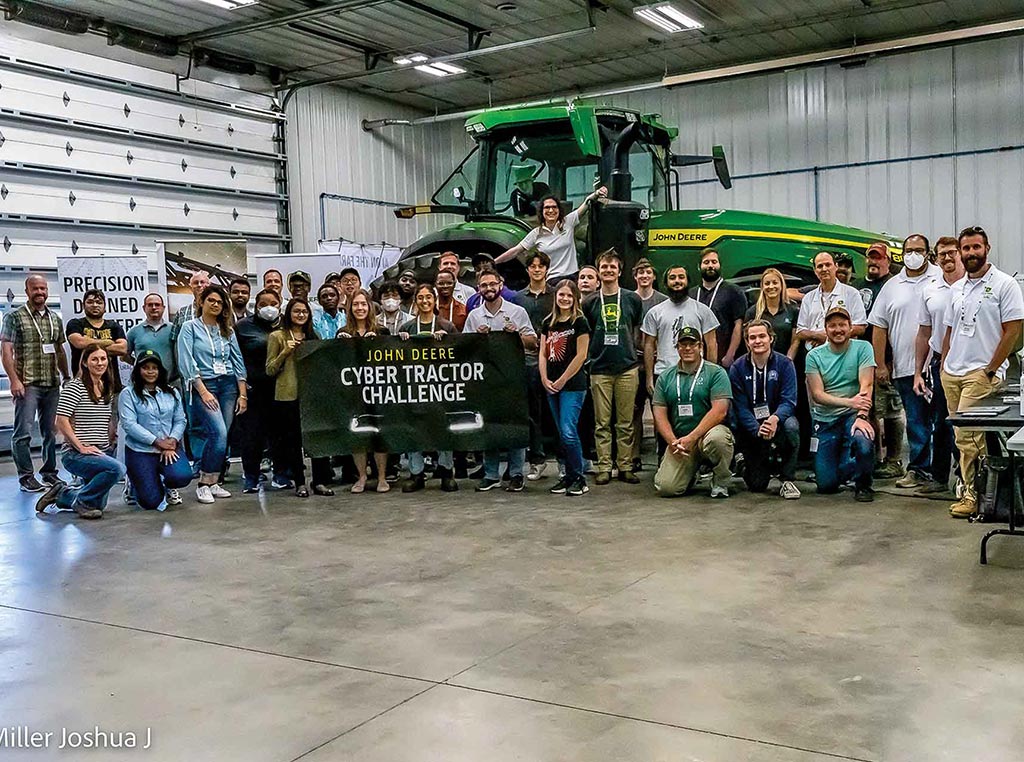Agriculture, Sustainability January 01, 2023
The Power of Pre
.
Clean soybean fields depend on a solid residual herbicide program.
For years, soybean producers were able to control in-season weeds with a single pass of herbicide.
Those days are long gone.
More weeds are evolving resistance to those one-pass post-emerge herbicide programs like those including Roundup Ready, Xtend or Liberty. Weed control experts recommend adding a pre-emerge herbicide program that uses an effective mode of action against problem weeds.
Palmer amaranth and waterhemp are growing weed problems in the U.S. Corn Belt, having evolved to be resistant to the active ingredients glyphosate and dicamba in some states.
The presence of just three Palmer amaranth plants per square meter can reduce soybean yield up to 60%, according to South Dakota State University.
While those two weeds are among the most troublesome, there are more than 270 weed species around the globe that have evolved herbicide resistance, according to the Weed Science Society of America.
"We are seeing more and more weeds evolving resistance to herbicides, so that kind of puts us in a situation where we are running out of herbicide options," says Amit Jhala, weed management specialist at the University of Nebraska. "We are already using dicamba-based herbicides in corn. Now that we are relying on dicamba-based herbicides in soybeans, we aren't rotating chemistries. There is dicamba- and 2,4-D-resistant Palmer amaranth in several states, and I think it's a matter of time when we will see dicamba-resistant Palmer amaranth in Nebraska."
Above. Yield-robbing weeds in soybeans may be mitigated if farmers use a solid pre-emerge herbicide program with layered residual activity, says Amit Jhala, weed management specialist at the University of Nebraska. Even 3,500 volunteer corn plants per acre can reduce yield 10%, Jhala says.
Adopting a solid pre-emerge herbicide strategy to use in combination with post-emerge herbicides is a necessary step, Jhala adds. The key is to use herbicides that contain different multiple modes of action that are different than those in the post-emerge program.
"We have some really good residual herbicides in the marketplace right now," he explains. "One good thing about residual herbicides is regardless of the soybean trait, you can use all the residual herbicides that are labeled for use in soybeans. But when it comes to postemergence herbicides, you need to be careful. You can only use dicamba, for example, on Xtend soybeans, not on Roundup Ready soybeans."
Jhala suggests growers can start the season off with clean fields, by applying a preplant burndown treatment including 2,4-D, dicamba, glufosinate, paraquat or carfentrazone. Applying 2,4-D or dicamba requires at least three weeks between application and planting unless soybeans contain traits that resist those active ingredients.
"Integrated weed control management gives us options that provide good control of weeds," he explains. "We can use soil residual herbicides, which can be applied prior to soybean planting, and then rely on a postemergence herbicide application."
Doug Shoup notes that with soaring input prices, pre-emerge herbicide options are also relatively inexpensive.
"Post-emerge herbicide options are no longer the cheapest part of our herbicide program," says Shoup, who farms near Lyndon, Kansas.
Plus, pre-emerge programs are effective.
"It's like insurance. Using a pre-emerge doesn't put as much pressure on the post-emerge application to control weeds," Shoup says. "We start the growing season with a better foundation for weed control, rather than hitting the panic button later in the season for weed control options." ‡
Read More

AG TECH, EDUCATION
Tech@Work
Cyber tractor challenge helps Deere proactively address cyber security.



